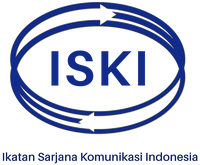MODEL KOMUNIKASI LINTAS BUDAYA DALAM RESOLUSI KONFLIK BERBASIS PRANATA ADAT MELAYU DAN MADURA DI KALIMANTAN BARAT
DOI:
https://doi.org/10.31315/jik.v6i1.41Keywords:
cross cultural communication model, conflict resolution, malayan and madurese customs.Abstract
The title of this study is The Cross Cultural Communication Model in Conflict Resolution Based On Customs in Malayan and Madurese, West Kalimantan. The aims of this study are to investigate: whatever of the Malayan and Madurese customs which can functioning as conflict resolution media; how are functioning process of that customs; and how the respons of West Kalimantan communities to the use of that customs. The research method used are ethnographic multiple side studies. The findings are the Malayan and Madurese customs which functioning as conflict resolution medium is the musyawarah custom.The musyawarah custom can resolution the small conflict only, whereas to resolution of the large conflict, ussualy obligate to the police.The musyawarah customs did by kepala desa or traditional management of Malayan and Madurese as soon as when the conflict happened. The musyawarah custom based and spritualited on Islam religi. The musyawarah custom has preventive function to avoid widely and to stopping conflict (to create peace). West Kalimantan communities (Malayan-Madurse and non Malayan-Madurese) can approve the use of musyawarah custom to be media of conflict resolution, but if conflict connecting with Dayak, the resolution must use Dayak customs.References
Bahari, Yohanes, 2003, Konflik Sosial Antar Etnik. dalam Jurnal Refleksi. ISSN: 1693-0770. Vol. 1. No. 1. Bandung. ———, 2006, Model Resolusi Konflik Berbasis Pranata Adat Pada Masyarakat Dayak Kanayatn di Kalimantan Barat. Laporan Penelitian Dasar. Pontianak. Lembaga Penelitian Untan.
Coser, Lewis A., 1977, The Functions of Social Conflict. New York: The Free Press.
Dahrendorf, Ralf., 1986, Konflik dan Konflik Dalam Masyarakat Industri. Terjemahan Ali Mandan. Jakarta: CV. Rajawali.
Fraser, Niall M and Keith. W. Hipel, 1984, Conflict Analysis. Models and Resolutions. New York. Amsterdam: Oxford. Elsevier Science Publishing Co. Inc. North Holland.
Galtung, Johan, 2002, Kekerasan Kultural. Jurnal Ilmu Sosial Transformatif. Yogyakarta: Insist Press.
Gudykunst,William B and Young Yun Kim,1992, Communicating With Stragers An Approach To intercultural Communication, McGraw-Hill, USA
Horrowitz,. Donald L., 1985, Ethnict Groups in Conflict. Berkeley: University of California Press.
Merthaman, I.P. Eka, 2002, Peranan Pemerintah Daerah Dalam Penyelesaian Konflik Sosial Antara Masyarakat Pendatang Dengan Masyarakat Lokal. Bandung. PPS Unpad.
Muhadjir, Noeng, 2000, Metodologi Penelitian Kualitatif. Yogyakarta: Rake Sarasin.
Mulyana, Deddy dan Jalaludin Rakhmat, 2000, Komunikasi Antarbudaya Panduan Berkomunikasi Dengan Orang-Orang Berbeda
Budaya, Remaja Rosdakarya, Bandung.
Purwana, Bambang Hendarta Suta, 2003, Konflik Antarkomunitas Etnis di Sambas 1999. Suatu Tinjauan Sosial Budaya.
Pontianak. Romeo Grafika.
Rahman. Ansar. et.al., 2000, Syarif Abduahman Alqadrie, Perspektif Sejarah Berdirinya Kota Pontianak. Pontianak. Romeo Grafika.
Salahudin, 2002, Setawar Sedingin. Sebuah Model Resolusi Konflik Masyarakat Adat Bengkulu. Studi Kasus penyelesaian Konflik Nelayan di Kota Bengkulu. Tesis. UGM Yogyakarta.
Simmel, George, 1955, Conflict and The Web of Group-Affliations. transfered by Kurt H. Wolf and Reinhard Bendix. New York: Free Press.
Soelaeman, M. Munandar, 1992, Ilmu Sosial Dasar Teori dan Konsep Ilmu Sosial, Eresco, Bandung.
Wijoyo, 1998, Resolusi Litigasi dan Non Litigasi. dalam I.P. Eka Merthaman. Peranan Pemerintah Daerah Dalam Penyelesaian Konflik Sosial Antara Masyarakat Pendsatang Dengan Masyarakat Lokal. 2002. Bandung. PPS Unpad
Downloads
Published
Issue
Section
License
Authors who publish articles in this journal agree to the following terms:
- Copyright remains with the author and gives rights to the Jurnal Ilmu Komunikasi as the priority to publish the article with an Creative Commons Atribusi 4.0 Internasional License, which allows the article to be shared with acknowledgment of the author of the article and this journal as the place of publication.
- Authors can distribute the publication of their articles on a non-exclusive basis (for example: on university repositories or books) with notification or acknowledgment of publication in the journal Option
- Authors are allowed to post their work online (for example: on personal websites or in university repositories) before and after the submission process (see The Effect of Open Access)
Jurnal Ilmu Komunikasi is licensed under a Creative Commons Atribusi 4.0 Internasional License.









